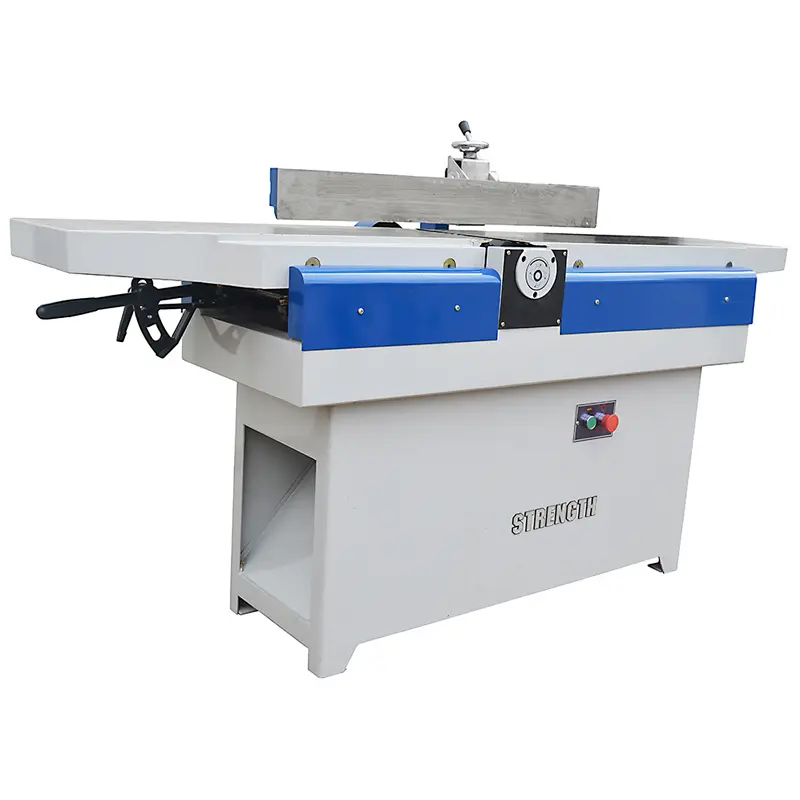To what extent does the planer tool wear need to be replaced?
The planer is one of the indispensable equipment in wood processing, and the tool is the core component of the planer. Its wear directly affects the processing quality and efficiency. This article will explore in depth the judgment criteria, replacement timing and how to extend the tool life of the planer tool, to help you better manage and maintain the planer equipment.
1. Judgment criteria for tool wear
Tool wear is an inevitable phenomenon during the use of the planer. Understanding the standard of tool wear can help you judge whether the tool needs to be replaced in time, so as to ensure the processing quality and equipment safety.
Judgment of wear amount
Radial wear amount: The wear size of the tool along the radial direction of the workpiece is an important indicator for judging whether the tool is blunt. When the wear amount reaches a certain standard, the tool needs to be replaced.
Flank wear: The average wear amount (VB value) in the middle of the wear band of the flank face of the tool is a key indicator for measuring the degree of tool wear. When the VB value exceeds the allowable range, the tool should be replaced immediately.
Tool surface condition
When there are obvious scratches, cracks or chipping on the tool surface, it means that the tool has been severely worn and needs to be replaced.
Blunt blades or notches will cause uneven planing and affect processing quality.
Processing effect
When the surface of the wood after planing shows obvious ripples, unevenness or the planing force increases significantly, it means that the tool is seriously worn and needs to be replaced.
2. Timing of tool replacement
Replacing worn tools in time can not only improve processing efficiency, but also avoid safety accidents caused by tool problems.
Regular inspection
Before using the planer each time, check the wear of the tool to ensure that the tool is sharp.
Clean the wood chips and dust inside the planer regularly to prevent impurities from aggravating tool wear.
Wear reaches the specified standard
When the tool wear reaches the wear limit specified by the industry standard or the manufacturer, the tool should be replaced immediately.
Abnormal situation
If there is an abnormal sound, wood jumping or a sudden increase in planing force during planing, it may be caused by tool wear. The machine should be stopped immediately to check and replace the tool.
3. Main factors affecting tool wear
Understanding the causes of tool wear can help you take effective preventive measures and extend the service life of the tool.
Wood characteristics
Wood containing hard scars, sand or metal impurities will accelerate tool wear.
When processing wood with high humidity, the tool is more likely to wear.
Processing parameters
Feeding too fast or planing too deep will significantly increase the wear rate of the tool.
Too high tool speed will also cause tool wear to increase.
Tool material and heat treatment
High hardness and good wear resistance of tool materials (such as carbide tools) can effectively reduce wear.
Proper heat treatment can improve the hardness and wear resistance of the tool.
4. How to extend the life of the tool
Through reasonable maintenance and management, the service life of the tool can be effectively extended and the replacement frequency can be reduced.
Regular maintenance
Regularly clean the wood chips and dust inside the planer to keep the tool clean.
Check whether the tool is installed correctly to ensure that the tool and the planer are well matched.
Optimize processing parameters
According to the characteristics of the wood and processing requirements, reasonably adjust the feed speed and planing depth.
Avoid sudden changes in feed speed or planing depth during planing.
Tool surface treatment
Use coating treatment, thermal spraying or infiltration technology to improve the wear resistance and corrosion resistance of the tool.
Sharpen the tool regularly to keep the tool sharp.
Safe operation
Operators should be professionally trained and familiar with the operating procedures of the planer.
During the planing process, avoid contact between the tool and hard objects (such as nails).
5. Tool replacement process
The correct tool replacement process can not only ensure the processing quality, but also avoid safety accidents caused by improper operation.
Shutdown and power off
Before replacing the tool, turn off the power of the planer and unplug the power plug to ensure that the equipment is completely stopped.
Cleaning and inspection
Use an air gun to blow away the wood chips and dust around the tool clamping device.
Check the wear of the old tool and record the wear data to provide a reference for subsequent tool management.
Install the new tool
Make sure the specifications and models of the new tool meet the requirements, and pay attention to the balance and tightening of the tool during installation.
After installation, check whether the tool is installed correctly to ensure that the tool and the planer are well matched.
Debugging and trial operation
After replacing the tool, perform a no-load trial operation to check the operation of the tool.
After confirming that there is no abnormality, formal processing can be carried out.
6. Summary
The wear of woodworking planer tool is inevitable, but through reasonable judgment, timely replacement and scientific maintenance, the service life of the tool can be effectively extended, and the processing efficiency and safety can be improved. I hope this article can provide you with practical references to help you better manage and maintain planer equipment.
Post time: Apr-16-2025

